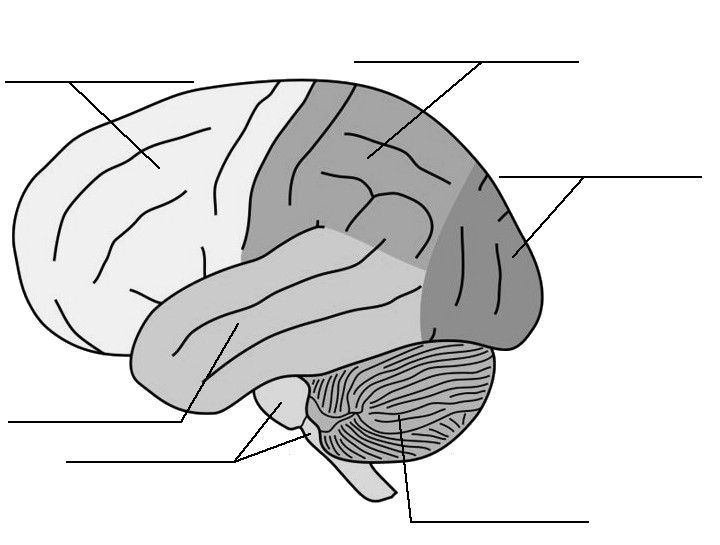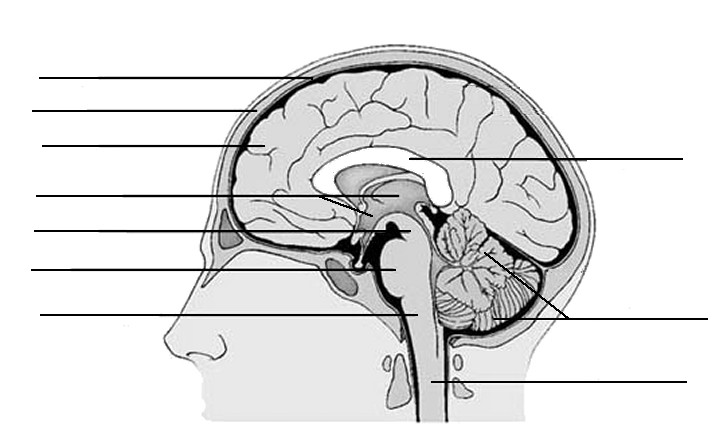NEUROANATOMY REVIEW
Some terms to know
- central nervous system (CNS) - brain and spinal cord
- peripheral nervous system (PNS) - cranial nerves, spinal nerves, and peripheral ganglia
- meninges - three outer membranes surrounding the CNS
- ventricles - hollow spaces inside the CNS
- cerebrospinal fluid (CSF) - fills the ventricles and a space between two of the meninges
- cushioning (padding)
- buoyancy
- nucleus vs. ganglion - collections of cell bodies in the CNS / PNS
- tract vs. nerve - bundles of axons in the CNS / PNS
- gray matter vs. white matter - areas of the CNS that are predominantly cell bodies / myelinated axons
Anatomical organization of the nervous system (see similar table in textbook)
| CNS PNS |
major division |
encephalon | ventricle | principle structures | function |
|---|---|---|---|---|---|
| CNS | forebrain | telencephalon (cerebral hemispheres) |
lateral | cerebral cortex (neocortex, and limbic cortex) |
perception, cognition, memory, voluntary movement, emotion |
| limbic system | emotion and memory | ||||
| basal ganglia | movement | ||||
| diencephalon | third | thalamus | relay into neocortex | ||
| hypothalamus | drives, endocrine & limbic systs, ANS | ||||
| midbrain | mesencephalon | cerebral aqueduct | tectum | primitive sensory | |
| tegmentum | various | ||||
| hindbrain | metencephalon | fourth | pons | "bridge" into cerebellum, various | |
| cerebellum | movement, balance, coordination | ||||
| myelencephalon | central canal | medulla | various (mostly reflexive) | ||
| spinal cord | spinal cord | central canal | dorsal horn | sensory input | |
| ventral horn | motor output | ||||
| PNS | somatic | (none) | (none) | 12 pairs of cranial nerves | sensory/motor head and neck |
| 31 pairs of spinal nerves | sensory/motor body | ||||
| autonomic | peripheral ganglia | ANS relays |
Some images to label



